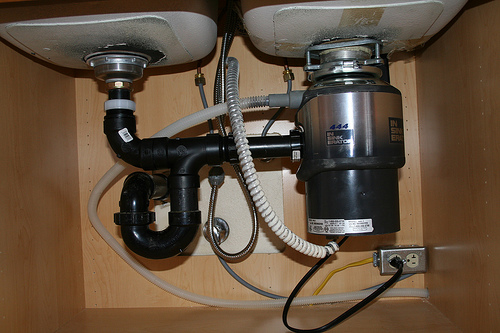
Troubleshooting a plumbing leak requires some patience. The key is to isolate the problem. In the case of a dishwasher leaking under the cabinet, clear out the cabinet and make sure there isn’t an active leak and then start the dishwasher.
There are plenty of possibilities here, from the water supply to the draining of the dishwasher. Grab a flashlight and watch…and wait. If it is leaking under the sink cabinet, it really is isolated to either the water supply to the DW, or the draining action of the DW. If the dishwasher itself were leaking, you would notice water coming from under the unit itself, rather than in the sink cabinet.
Start at the wall valve and look for leaks. Follow the water supply line from the valve to where it exits the cabinet. No leaks? Then wait for the drain cycle. When the dishwasher drains, it sends water up the drain hose to the air gap (on top of your sink) and down to the inlet of the garbage disposal. Watch for leaks. It will likely be coming from either the air gap or the disposal. If you have a damaged hose, replace it and re-secure the hose clamps. You may have water coming from the air gap on top of the sink and some of it finds its way into the cabinet. If that is the case, clean out the hose from the air gap to the disposal so that the blockage doesn’t force water out of the air gap. You might also find that the disposal itself is leaking (it should also leak when you run water down that side of the sink from the faucet). If that happens, you need a new disposal. The leak could be from something not discussed here.

